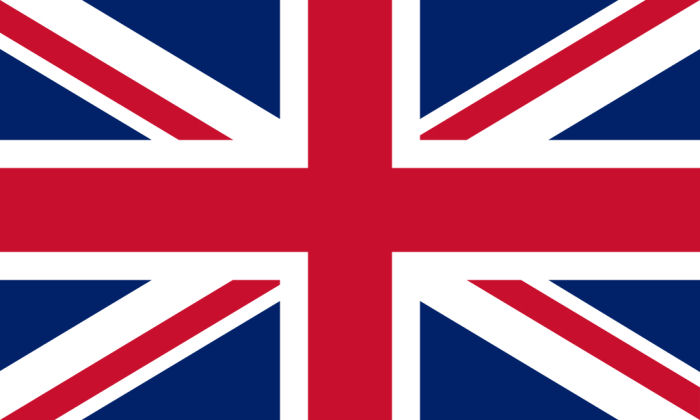
English~American Day
23 April 2021

The American Community Survey, compiled between 2008 and 2012 and being the most recent analysis, identified 5% of the total population of Bedford County as descending from English ancestors.
The English immigrants to North America brought their holidays to their new homeland. Many of those holidays ~ as the holi portion of the name suggests ~ were holy days. The day on which they honored their patron saint (established during the Tudor period), Saint George was 23 April.
Saint George was born in the Greek region of Cappadocia in what is present-day Turkey. His father, Gerontius, who served in the Roman Army and his mother, Polikronya, who was from Palestine became Christians. Like his father, George became a soldier and served in the Praetorian Guard for the emperor Diocletian. And like his parents, George professed to being a Christian. Ordered to renounce his Christian faith, George refused and was put to death on 23 April 303.
Saint George is best known for the legend of Saint George and the Dragon. Before being attributed to Saint George, the legend of the militaristic saint who tamed and slayed the dragon who had demanded the human sacrifice of a princess was originally associated with Saint Theodore Tiro. The legend began in the Ninth Century, but it was not until the Eleventh Century that it became associated with George of Cappadocia.
The feast day of Saint George was first mentioned in the Durham Collectar, from the Ninth Century. By the early 1400s, work on that day was prohibited. Church attendance was proclaimed to be mandatory on St. George's feast day. The English Reformation of the 1550s saw all religious flags and banners being abolished, with the exception of the white field and centered red cross of St. George. As popular, or perhaps more popular than Christmas throughout England, St. George's Day was widely celebrated by the nation until the union of England and Scotland of 1706/07. Then the holiday of St. Andrew, celebrated throughout Scotland, gave competition to St. George's Day for popularity ratings. Although the celebration of St. George's Day was adversely affected, it did not die out, and continues to be held to the present-day.
Celebrants of St. George's Day delight in everything traditionally 'English'. Until recent times, celebrants would wear a red rose in their lapels. A lapel pin displaying the red cross on white background of St. George's flag is more currently popular. In thinking of color, blue was said to have been St. George's favorite color, so many celebrants dress entirely in blue on this day. Traditional Punch and Judy shows are greatly enjoyed in England, although they aren't as popular in America. Morris Dancers and Mummers lead parades, dancing to English folk music. A favorite variation in music is the singing of the hymn, Jerusalem, by William Blake.
Saints' days have traditionally been times for feasting. And in fact most of the Saints' days were called 'feast days', with the Feast of Saint George being the most elaborate.
Traditional English dishes are common fare for St. George's Day. One of the favorite dishes enjoyed by English~Americans is called Shepherd's Pie, originally called Cottage Pie. Shepherd's pie consists of ground meat topped by mashed potatoes. The meat can be roast beef or mutton (i.e. lamb). The meat is ground up and then cooked in a gravy or sauce flavored with onion. Potatoes are cooked and then mashed and spread over the top of the meat and the whole is baked. Another pie based on ground meat is Steak and Kidney pie. For this dish, a hot water crust or shortcrust pastry is prepared. Rolled out flat, a portion is used to line a baking dish. The dish is then filled with a mixture of diced beef and diced kidney, fried onion and gravy. Another portion of the pastry is placed over the top of the mixture and the top and bottom pastry are pressed together before baking. A variation of the Steak and kidney pie is the Steak and Oyster Pie, which is slow-cooked. Another variation of Steak and kidney pie is Rag Pudding, which is minced meat and onion wrapped in a suet shortcrust and then cooked in a cheesecloth rather than being baked. Bedfordshire Clanger is a similar pie encircled by a crust. In the case of a Bedfordshire Clanger, the pastry is a suet shortcrust onto which is spooned liver and onions or bacon and potatoes or even pork and onions. The pastry is then folded over and the edges crimped together. After the clanger is baked it can be carried and eaten by hand. The clanger is a favorite of workers because the crimped edge of the crust can be held by even dirty hands because it is usually thrown away. The Bedfordshire clanger is sometimes filled with meat in one end and fruit or jam in the other providing a combination of savory and sweet flavors. A fillet steak (i.e. beef tenderloin) that is coated in pate de foie gras of liver and then rolled in a flaky, light, puff pastry to be baked is called Beef Wellington. Sometimes a mixture of finely diced mushroom, onions, thyme and black pepper is sauted and added to the meat inside the puff pastry. Toad in the Hole consists of short lengths of sausage placed in batter and baked. The sausage either rises to the top of the baked pastry or the ends pop up through the top. The dish gives the appearance of a toad in a hole with just the tip of its mouth emerging from the hole.
A very classic English dish is Yorkshire pudding, a baked popover of unsweetened egg and flour batter often eaten with roast beef and gravy. The batter for a Yorkshire pudding calls for 1/3 cup flour and 1/3 cup milk per each egg. The batter is poured into either a preheated baking pan or into muffin tins. Some recipes call for covering the batter with greaseproof paper in order steam it slightly.
Meat not baked in a pastry or topped by mashed potatoes includes Bangers which is what the English call sausage. As anyone who has fried sausage knows, if it has a high water content it might burst open with a sound resembling a bang. A favorite side dish for Sausage is mashed potatoes and the combination is known as Bangers and Mash. Lamb kidneys cooked in a spice sauce constitutes Devilled Kidneys. Worcestershire sauce, mustard and butter form the main ingredients of the 'devilling' sauce. Devilled kidneys are often eaten on toast for breakfast.
Bubble and Squeak consists of cooked potatoes and cabbage which are mixed together and then fried. The dish was originally beef sliced very thin and fried with cabbage and carrots. By the 1880s, it had become the dish that is known today. The reason for the change is not known, but if you ask for Bubble and squeak today, you will get potatoes and cabbage cooked together, mashed and then fried. It is usually served with fried roast beef or sausage.
Perhaps the most famous English food is Fish and Chips. The dish consists of a battered and fried filet of fish paired with thick cut 'french' fried potatoes. In the United States, the chips are usually called 'steak fries'. Haddock is the type of fish most commonly used in fish and chips because it very flavorful and not too flaky. A 'dressing' for Fish and chips is often malt vinegar. Fish and chips were introduced to the people of the United Kingdom in the 1860s. It quickly became a favorite of the nation due to its ability to be served equally well as a plated supper or as a take-out finger food. When sold by a street vendor, fish and chips were historically sold wrapped in a page from the London Times. Nowadays, with the cost of newsprint higher than what it used to be, the take-out fish and chips are wrapped in plain paper. A vegetable (besides the potato) that is often served along with fish and chips is Pease pudding. Pease pudding is simply split yellow peas which are boiled for nearly an hour to soften them. A variety of additional ingredients may be added at this point, including egg and spices such as saffron, nutmeg and cinnamon.
All good meals should finish with a memorable desert. The English enjoy pies and pastries. One of the favorite pies that traveled with English immigrants to the North American colonies was Mince pie. Mince pie, variously called 'mincemeat' pie contains a mixture of dried fruit and spices. Traditional mince pie was made from beef suet, the hard fat located near the kidneys and loins. Because mince pie is a favorite around Christmas, it is also known as Christmas pie. Lardy cake is made from, as its name suggests: lard, mixed with flour, sugar, currants, raisons and spices. Thinly rolled dough is layered with the fruit ingredients and then baked. Certain authorities claim that the cake should be turned upside down after baking so that the lard can soak through the layers of dough within. Treacle Tart's main ingredient is 'treacle', which English~Americans would call molasses. Light or dark corn syrup is sometimes substituted for the molasses. A shortcrust pastry is filled with a mixture of the treacle, breadcrumbs and lemon zest. The finished tart is served with a dollop of clotted cream, ice cream or custard. Scones are small wheat or oat meal cakes using baking powder as a leavening agent. The cakes are brushed with an egg glaze and then baked. Scones are often topped with jams or Lemon Curd, a thick preserve made by blending lemons, butter, eggs and sugar. No listing of traditional English dishes would be complete if Plum Pudding was left out. Usually prepared at Christmas time, a plum pudding is more like a cake than what people in the United States call 'pudding.' Plum pudding gets its name from the raisins it contains. A 'dough' of suet and bread crumbs, sugar and spices is mixed with candied fruits, raisins and nuts. Although the mixture can then be baked in an oven to produce the desired loaf, the traditional method is to steam it in a double boiler for about four hours. The alcoholic content of the brandy which is one of the ingredients of the mixture will be mostly steamed out, but just before serving the dish, additional brandy is poured over the pudding and it is set aflame and served flambe.
Tea is the quintessential English beverage of choice. It is drunk with or without milk or sugar and comes in a variety of flavors according to herbs added to it. The second most popular beverage is Beer which can be divided into two types: light lagers and richly flavored ales. Cider is growing in popularity among the English and their American cousins. During the summer, Pimms is a popular fruit and alcohol punch.
Additional Information Might Be Added Here. Please Check Back.
Click on this logo to return to the Calendar page.

